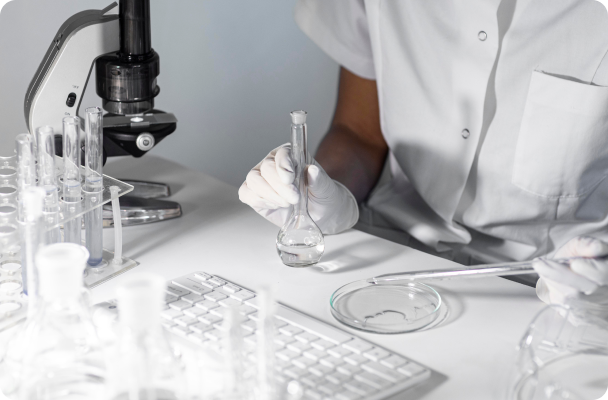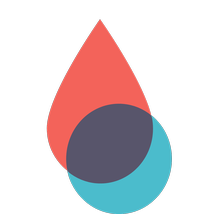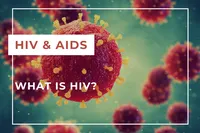Home › Biological sample › Infectious diseases › HIV
HIV-infected patient biological samples
For research applications
The development of drugs and diagnostic tests for the treatment and detection of HIV/AIDS requires conducting studies on biological samples obtained from patients with HIV.
Here's a brief overview of disease caused by HIV and how the service provided by Labtoo contributes to accelerating R&D projects in the pharmaceutical industry.


Are you looking for biological samples from patients with HIV?
What is HIV?
Human Immunodeficiency Virus (HIV) is a single-stranded RNA retrovirus that targets the human immune system, leading to Acquired Immunodeficiency Syndrome (AIDS). Its transmission can occur through sexual contact, blood transfusions, or from mother to child during pregnancy, childbirth, or breastfeeding.
Once introduced into the body, HIV primarily infects CD4+ T lymphocytes to replicate using the cellular processes of these immune cells. After replication, the virus is released from the host cell, which may lead to its destruction. Consequently, individuals infected with HIV are more susceptible to developing opportunistic infections, caused by microorganisms normally controlled by the immune system. Additionally, the risk of cancer is increased with immune deficiency.
The development of the disease does not occur immediately after infection. It may take several years before AIDS symptoms manifest in an individual infected with HIV. In France, it is estimated that on average, an untreated HIV-positive person will develop AIDS approximately 7 years after HIV infection. It is essential to note that even in the absence of symptoms, an HIV-infected person remains contagious, highlighting the importance of frequent testing, especially after risky behaviors such as unprotected sex or needle sharing.
There are two main types of Human Immunodeficiency Virus: HIV-1 and HIV-2. HIV-1 is more widespread globally and associated with the HIV/AIDS pandemic, while HIV-2 is less common, primarily found in West Africa. HIV-2 is generally less virulent than HIV-1, but it exhibits natural resistance to some antiretroviral drugs used to treat HIV-1.

Explore Labtoo's Service for Your Biological Sample Research
Labtoo assists you in sourcing biological samples from patients with aids. Our team manages the entire project of transferring biological materials from inception to sample delivery.
- Feasibility assessment of sample availability or clinical collection from referenced clinical centers
- Validation of regulatory aspects
- Establishment of a contractual framework
- Dispatch of desired samples under appropriate conditions
- Transfer of associated clinical data
- Additional analytical and experimental services
Types of available samples
Fresh tissues
Biopsies can be performed on individuals infected with HIV, including samples of lymphoid tissue or spleen. Labtoo is able to arrange for the preparation and shipment of fresh diseased tissue within 24 to 48 hours after surgery.
Frozen tissues (OCT and FF)
Similarly to fresh tissue, once the tissues are cleared for research, the clinical site can freeze and keep the frozen tissue samples at -80°C or in liquid nitrogen for ulterior use.
FFPE Tissues
Pathologists typically embed the biopsies and resections in paraffin. FFPE blocks of infected tissues can be used later for research.
- Whole blood: from HIV-infected patients
- PBMC (Peripheral Blood Mononuclear Cells): They can be sampled in research aiming to investigate T lymphocytes in HIV-infected patients.
- Plasma/Serum: These biological samples are commonly utilized in research to study viral load and immune response associated with HIV, as well as for the development of diagnostic methods.
- Urine
- Feces
- Other
Typical associated clinical data
-
- Age
- Gender
- Ethnicity
- Detection Method
- Serological result
- Bacterial Load
- Follow-up Treatment
- Simptomatology
- Medical Imaging
- Positivity/Negativity for certain Infections
- Other Data (upon request)

Labtoo identifies clinical sites that can prepare and transfer sample collections tailored to your specific project needs.
Contact our team to discuss your project.
Send your request to our team:
Symptoms of HIV infections
HIV infection progresses through three distinct phases:
Primary infection
This phase typically occurs within the month following contamination and is characterized by a rapid multiplication of the virus, resulting in an increase in viral load.
The symptoms of this phase often resemble those of influenza (headaches, muscle aches, fatigue, etc.). The duration of this phase can vary, ranging from a few days to a few weeks.
Due to the nonspecificity of these symptoms, the diagnosis of HIV infection is rarely made at this stage.
Chronic Phase
Also known as the asymptomatic phase, this stage can last for several years.
The patient does not exhibit symptoms as pronounced as during the primary infection, but the virus continues to multiply, gradually weakening the immune system.
This gradual weakening can eventually lead to symptoms such as weight loss, skin infections, cough, or fever episodes.
AIDS Phase
In the absence of treatment, the AIDS stage occurs several years after contamination.
At this stage, the immune system is significantly weakened, with a CD4 T lymphocyte count lower than 200/mm3 (while the normal range is between 600 and 1200/mm3).
The body becomes extremely vulnerable to any bacterial, fungal, viral, or parasitic infection, which can lead to the development of serious illnesses.
Diagnosis and treatment of HIV

The primary diagnosis of HIV infection typically relies on blood tests and the detection of antibodies directed against the virus through a specific ELISA test. However, it is important to note that there is a period called the "serological window" during which antibodies are not detectable, usually up to 28 days after infection.
Subsequently, quantification of blood lymphocytes or viral RNA helps determine the stage of infection. In case of a positive result, additional tests are often conducted to detect the presence of other pathogens such as hepatitis viruses, syphilis, tuberculosis, etc.
While HIV infection cannot currently be cured, antiretroviral therapy (ART) is available to block viral replication, significantly slowing the progression of the disease and strengthening the immune system against other infections. It is crucial to initiate ART as soon as possible after diagnosis to effectively reduce viral load.
Current treatments allow people living with HIV to have almost the same life expectancy as uninfected individuals, but these treatments must be continuously followed throughout life.
Complications of HIV infection
When a person reaches the stage of Acquired Immunodeficiency Syndrome (AIDS), their immune system is significantly weakened, making them vulnerable to various serious complications.
Among the most common complications of AIDS are opportunistic infections, such as pneumocystis pneumonia, tuberculosis, toxoplasmosis, fungal and viral infections, as well as certain cancers, such as Kaposi's sarcoma and non-Hodgkin's lymphoma.
Additionally, individuals with AIDS may also experience neurological disorders, kidney problems, gastrointestinal disorders, and significant weight loss. These complications can lead to rapid deterioration of health and, if left untreated, can be fatal.




